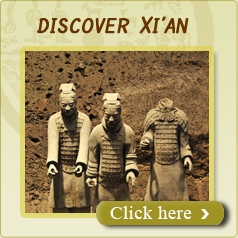Stone Steles Museum

The Stone Steles Museum in Xi'an is an art treasure-house with the oldest and richest collection of steles in China. It is not only one of the centers of ancient Chinese stone-engraving classics, but also the focus of the works of art of celebrated calligraphers of past dynasties. The numerous standing steles resemble a forest, hence the name; Steles. With a history of almost 900 years, it is an art gem renowned at home and abroad.
The Steles is an enlargement to the Confucian Classics stone inscriptions in the Tang Dynasty. Shitai Xiaojing ( stele engraved with the Canon of Filial Piety) and Kaicheng Shijing ( steles engraved with the Confucian Classics) of the Tang Dynasty were originally kept in the Imperial Academy in Wu Ben District of Chang'an, the capital of the Tang Dynasty ( in the vicinity of the present Wen Yi Street, southern Xi'an). Following the devastation in the late Tang Dynasty, Chang'an was rebuilt with its size reduced by the order of Han Jian, magistrate of Chang'an. In 904 AD the engraved Confucian Classics were moved inside the Wen Xuan Temple ( in the vicinity of the present She Hui Street of Xi'an).Due to poor environment, in the second year of Yuan You of the Song Dynasty, ( 1087 AD) on the suggestion of Lu Dazhong, all the Confucian Classics and other valued Tang steles were moved to the present site of the Steles under the auspices of Li Chi. Thus the foundation of the Steles was initially laid. With the successive collections of Steles in the Song, Jin, Yuan, Ming and Qing dynasties, it was gradually renovated and expanded, making one feel among a Steles. But it was not until the early Qing Dynasty that the name " Steles" was finally chosen. Based on the design of Liang sicheng, China's well-known architect, the Steles was extensively renovated in 1937, and was completed in Feb. 1938, looking in the main the way it does today.




